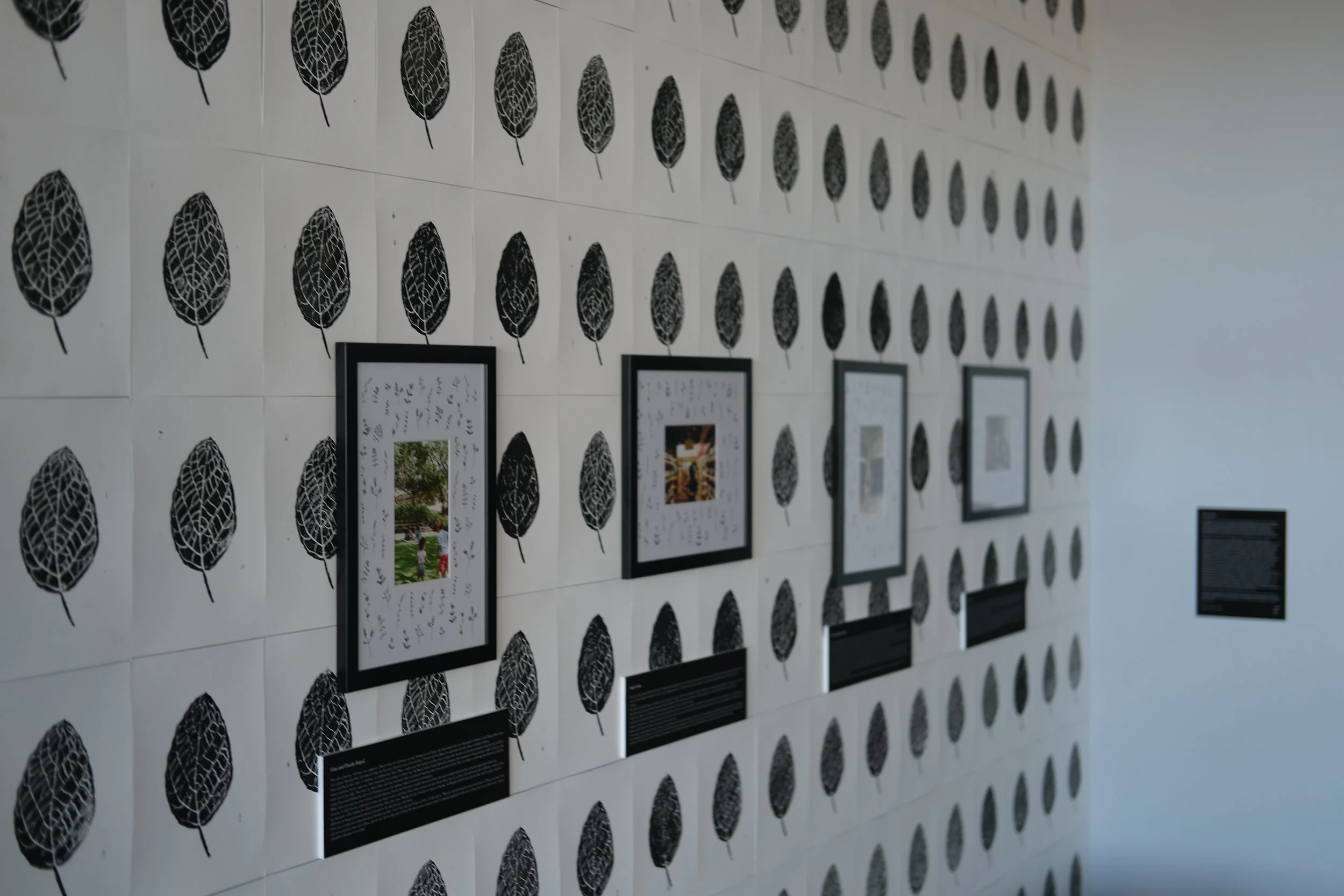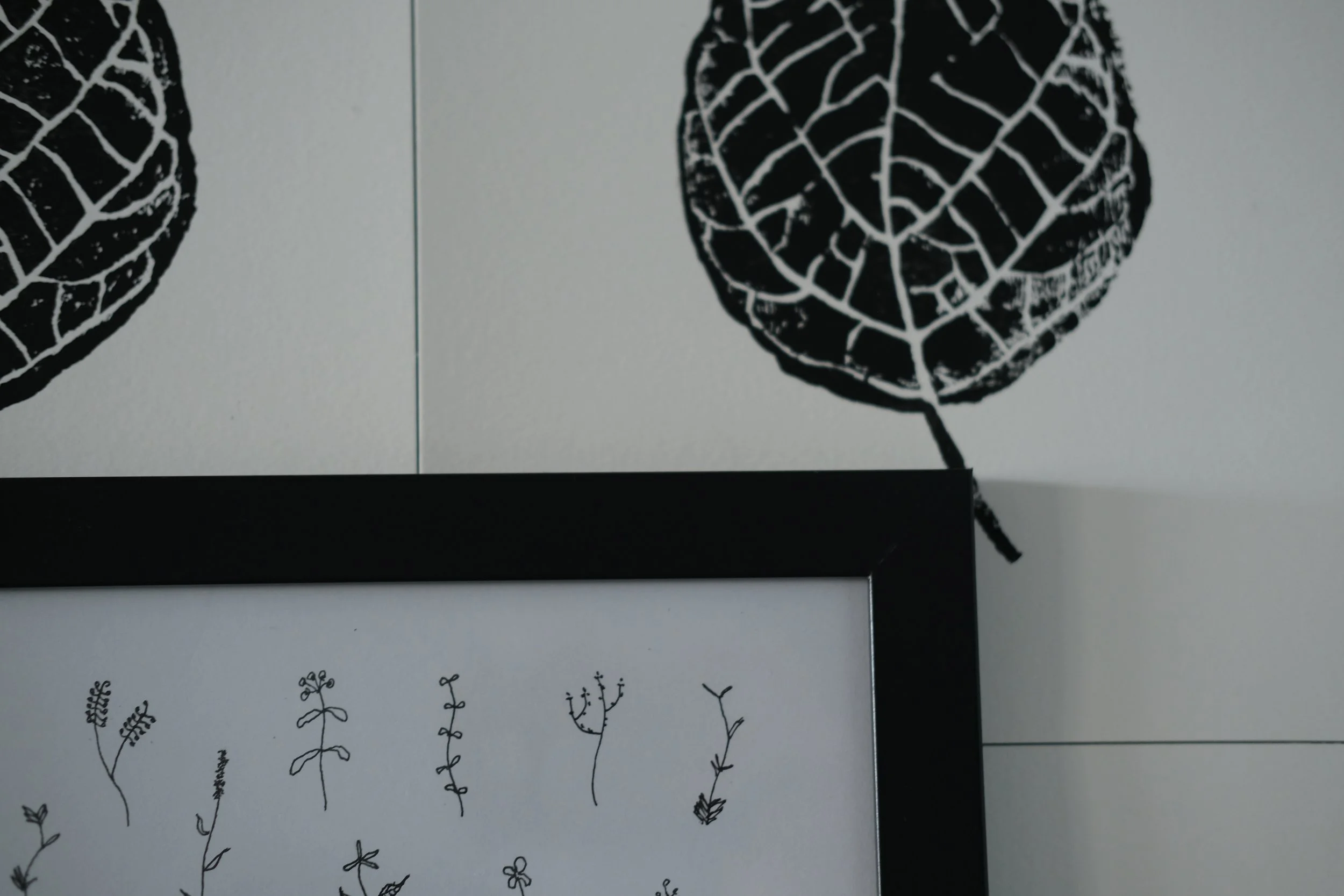The Fields
When I started working on the project that would become The Fields, the original idea was some photographs and paragraphs highlighting attendees of Harbor Church West Oahu who work in ministries uniquely and/or creatively local communities. I began by interviewing and photographing those who were willing to be featured, condensing the notes into a few paragraphs about each person, and planning to frame both the photos and the stories next to each other in one frame for each person, with a multiple-opening matting. As time went on and I needed to delay the project due to travel and classes, I recognized that I wanted to make the project my own in some way. I am not primarily a portrait photographer, so I didn’t feel that the pictures themselves came from my best ability to present these stories. I wanted to do something that honored the project by treating it with intentionality. I wanted to develop it further.
Around the same time, outside of this project, I was finding a lot of inspiration from grass. Not cut grass, not manicured lawns or golf-course grass, but wild grass, abundant grass, the weeds that overflow the unmowable geometric patches tucked in concrete walls along the highways. I wondered about what happens when people stop cutting things down. Grass is free. It is unapologetically itself. It sways in the wind almost fluidly, giving a shimmering expression to a breeze, jumping the border between hard ground and invisible sky.
Struggling with creative block on the photo project, I thought, “What if I drew on the inspiration I already have instead of searching for something else?” I didn’t see how grass and these ministry photos would fit together, but it gave rise to the name of the project: The Fields. I thought of my recent Fredo pen drawings and wanted to draw grasses and plants I found in the vegetated areas which were so inspiring to me at that time. I went on several walks through my neighborhood and took photos of plants I saw. Then, with some artistic liberty, I sketched simple line drawings of eight plants and repeated them in a randomized pattern on a wide matting board around the photos in the frames. It was at this time that I no longer considered putting the wording in the frames with the photos.
While I was working on the drawings, Zoe and I were discussing the project and she helped me consider what else could be added to make the most of the space on the wall. I’d also been inspired recently by Agnes Denes’s Wheatfield–A Confrontation (1982) where the artist planted a healthy crop of wheat just blocks away from New York’s World Trade Center. As her work emphasized the mismanagement of resources leading to scarcity throughout the world, I think the visual power of abundant flora can communicate powerfully God’s provision for us and our responsibility to steward and share it in kindness and equity, rather than hoarding or hiding. The ministry workers who abundantly give their time, effort, and resources to bless people and help them overcome challenges are practically working this concept out. During our conversation, Zoe noticed a leaf design woodblock print of mine on the wall. She pointed out how this medium could bring out this idea of abundant flora. Additionally pulling visual inspiration from Andy Warhol’s Marylin Diptych, I had the idea to cover the wall with woodblock prints of a leaf in a grid behind the framed photos. We decided to select a leaf from the vicinity of Harbor Church West Oahu. We found the leaves from the trees in the parking lot of the mall where the church meets were a good size and shape for the prints. I took one leaf from the tree and used it as a reference for a pencil sketch on a block of MDF. Then I carved the image out of the block and sprayed shellac to seal it. Over the course of about a week, I made just under 200 prints of the leaf. Zoe helped me assemble the whole project on the wall of the church foyer. She also had the idea to use black backgrounds and white text in wide placards beneath the photos for the written stories. This aided tremendously as the plan for the wording needed reworking.
In the final work, the pen drawings are intended to evoke a sense of individual beauty, with each plant being unique, drawn slightly differently even from its same-species counterparts. Filling the matting in the frame plays into the idea that the work done by the featured people is generously given. These themes are carried into the papered wall of leaf prints, each print challenging uniformity with differences and discrepancies kept and valued. The prints carry the motif of fingerprints, inked on a card, expressing the ideas of the image of God, endowed on every person touched by the ministries of those featured, and the presence, grit, and hands-on nature of the work they are doing. You have to be physically present to make a fingerprint. You have to touch something that will leave a mark. You quite literally have to get your hands dirty. Accompanying this with the previously discussed theme of abundance, The Fields presents a field of prints, with gardens in the frames, displaying the present, patient, persistent work these people do, and the unique, image-bearing beauty of the people they serve.
For me, The Fields became about learning to accept where I am and be open to others’ ideas while advancing the discovery of my own creative voice. I did not begin with the idea, I received the main concept from my friend, Justin. The interviews challenged my assumptions about ministry and the experience of each feature. I cannot take full credit for developing the full-wall aspect, because my wife was the one who inspired me to think bigger than I was thinking. While I can honestly say I did my best to make each element my own and select mediums and forms I thought most fitting to convey the ideas, I think the project took its best form from the combined input of all involved. To me, this illustrates the point that living an artistic life to the fullest does not need to exist in competition with the voices of others. I am learning it is healthy to hear the input of friends while also being able to decide on and further develop ideas that fit the overall vision and artistic expression in mind for the project.
My thanks goes out to Angie Loong, Cassie Fosket, Melodee Haole, and Gina and Charlie Begeal who shared their stories and time with me; Justin White, my friend and the pastor of Harbor Church West Oahu who gave the original inspiration for the piece; Amy Porter, Jeremy and Kelsie Caudill, who all helped me with the logistical choices of the project; and most deeply, my beautiful, patient, wise, and industrious wife Zoe without whom The Fields would not be the same.
07.17.2023






